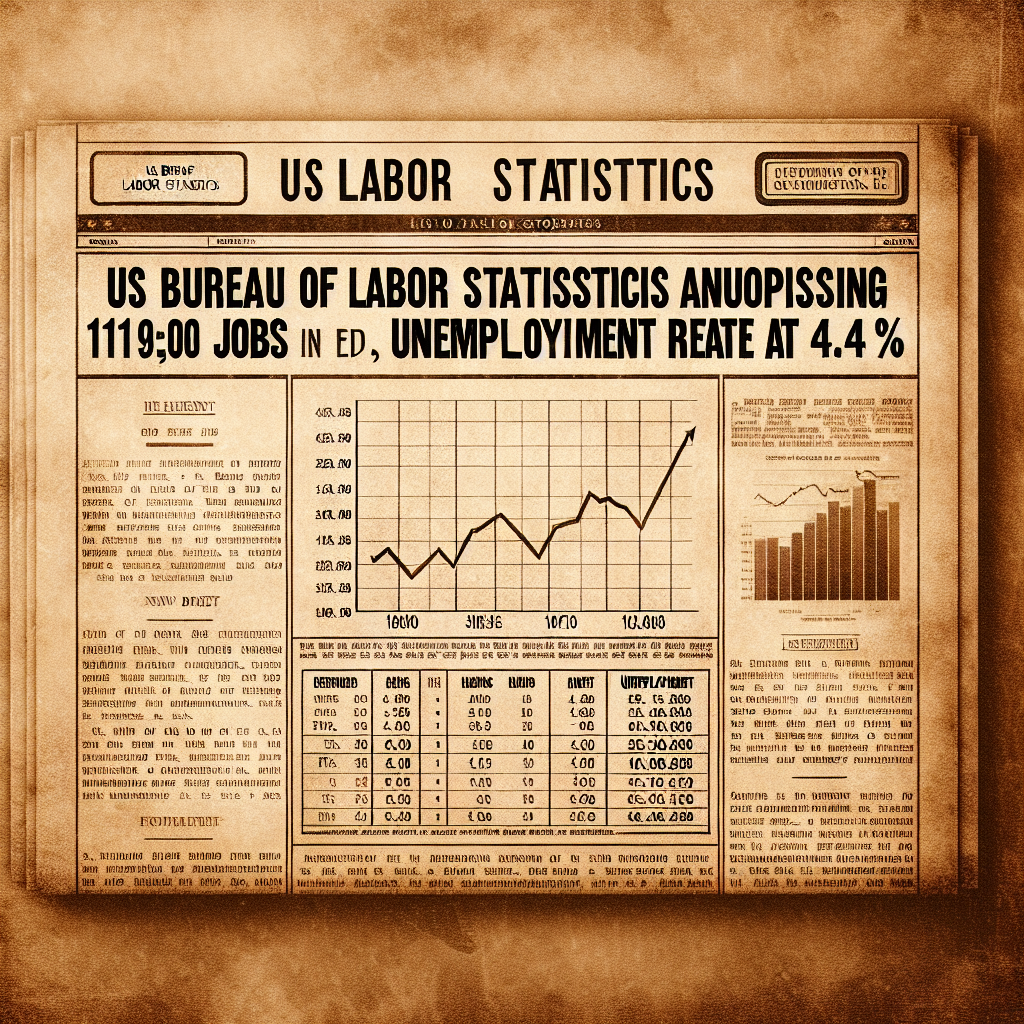The Bureau of Labor Statistics (BLS) in the United States released the September nonfarm payroll report on Thursday, showing a surprising addition of 119,000 jobs that month, far exceeding expectations. The unemployment rate also stood at 4.4%.
This report marked the end of a 44-day record government shutdown period starting from early September, during which there was a data gap in labor market statistics.
The nonfarm payroll data for September revealed an increase of 119,000 jobs. Dow Jones had previously expected a general figure of 50,000 jobs for September. The August nonfarm payroll data was revised downward to a gain of 26,000 jobs, revised from an initial increase of 22,000 jobs. July’s nonfarm payroll figure was also revised downward to 72,000 jobs, down 7,000 from previous estimates.
In addition to the employment figures, the BLS stated that the unemployment rate had slightly risen to 4.4%, the highest level since October 2021. However, the broader unemployment rate, including those not actively looking for work or working part-time due to economic reasons, decreased slightly to 8%.
Average hourly earnings in September increased by 0.2% compared to the previous month and 3.8% year-on-year, slightly below expectations of 0.3% and 3.7%, respectively.
Daniel Zhao, Chief Economist at job site Glassdoor, commented that the September employment report showed resilience in the labor market before the government shutdown, with job numbers surpassing expectations. However, with the revision of August’s employment data to a net loss and the rise in the unemployment rate, the overall situation remains uncertain.
“These data reflect the situation from two months ago and do not necessarily depict the current conditions in November,” he added.
Despite this report uplifting market sentiment, U.S. stock futures continued to rise while government bond yields mostly declined.
Traders are still betting that the Federal Reserve will not further cut interest rates at its December 9th to 10th meeting. The Thursday employment report is the last report the Fed will receive before its December meeting. The minutes from the Fed’s October meeting released on Wednesday showed a hawkish tone, strengthening the consensus that the Fed will likely hold rates steady until the end of the year.
Seema Shah, Chief Global Strategist at Principal Asset Management, noted that while today’s employment report reflects past conditions, it still caused positive market volatility. The stock market welcomed the strong nonfarm payroll data, indicating a resilient economy, while the bond market viewed the rise in unemployment and slower wage growth as factors that could leave open the possibility of a rate cut in December.
Overall, the September employment report indicates that the labor market has maintained a steady but slow trend consistent with the annual trajectory as it enters the fall season. This suggests that despite occasional tough diplomatic policies from the White House or partisan disputes, domestic economic activities of businesses remain unaffected.
Another set of data released by the Labor Department on Thursday showed that for the week ending November 15th, initial claims for unemployment benefits were 220,000, a decrease of 8,000 from the previous week and below the general expectation of 227,000.
The majority of new job additions in September came from the healthcare industry with 43,000 new positions, consistent with the growth rate over the past year. The food and beverage industry added 37,000 new jobs, while social assistance saw an increase of 14,000 jobs.
On the other hand, the transportation and warehousing sector shed 25,000 jobs, and federal government employment decreased by 3,000. The government sector had been a major contributor to job growth but has seen a reduction of 97,000 jobs year-to-date. Additionally, professional and business services lost 20,000 jobs, with temporary help falling by 16,000.
Household surveys painted a more optimistic picture of the labor force.
The total employed population increased by 251,000 in September, with the labor force growing by 470,000 people, reaching a record high of 171.2 million. The labor force participation rate saw a slight increase to 62.4%, the highest level since May.
Full-time employment rose by 673,000, while part-time employment decreased by 573,000.

